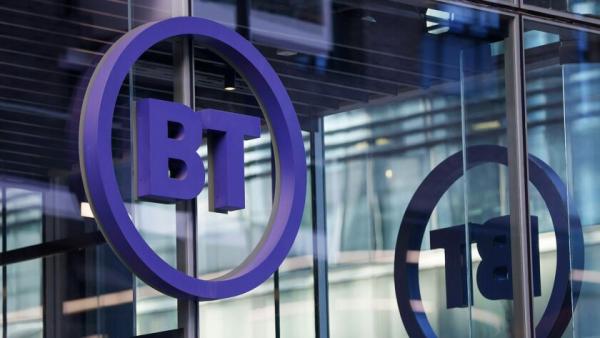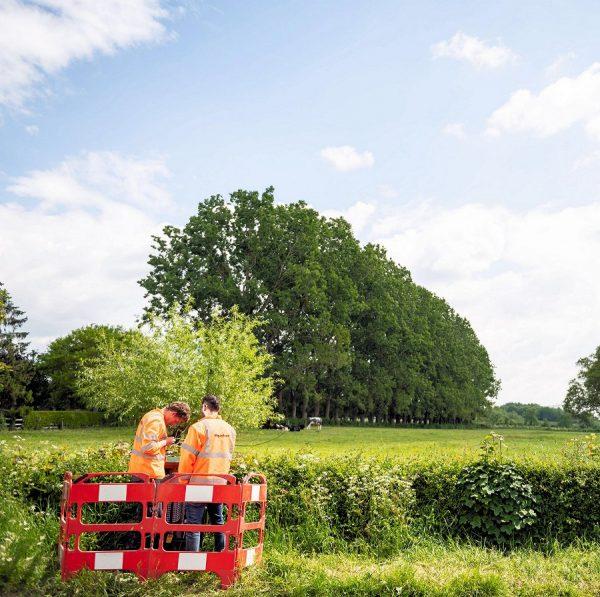
Connected Britain took place at ExCeL London from the 11th to the 12th of September. The comprehensive two-day programme brought together 7,500 industry experts, innovators, and policymakers to shape the future of connectivity. With showcases from local authorities, cutting-edge exhibitors, and networking opportunities, the UK’s biggest digital economy event was a must-attend for those driving the nation’s digital transformation.
The first day consisted of an opening address and a range of panels, five of which have been summarised below.
Securing the UK’s position as a global tech leader
Chaired by Sasha Qadri, a presenter and journalist, experts discussed the role connectivity has to play in enabling growth in the UK; the socioeconomic opportunities that can be unlocked; the barriers to success and what is needed from the government, industry and stakeholders to overcome challenges
Paul Alexander, Head of Cloud Infrastructure Business, Europe, Nokia, commented: “We have many advantages in the UK. Look at our brilliant, leading universities, which are bursting with talent – but people often leave with debt and without a job. We’ve hired apprentices and it is working really well: we are giving them the skills the sector needs. The UK needs to maximise apprenticeships and give its young people a head start.”
Julian David, Chief Executive Officer, techUK, said: “Implementing tech is killing us. The government needs to focus on facilitating. Investing in telecom networks will never be a bad thing. Connectivity will save the country and our NHS in the long term. The government says it is serious about demand, so let’s make innovation financially rewarding.”
Keri Gilder, CEO of Colt Technology Services, added: “Artificial intelligence will bring huge changes to the world of work. But let’s view new technologies as a collective, not in isolation. The UK has some of the ingredients for securing its growth as a global leader, but we need more. We need to capitalise on our ecosystem. How do we take this to the next level? How do we ensure that projects result in more than just a science project? The UK needs to keep building, and we can.”
Iain Milligan, Chief Network Officer, Three UK, continued: “There’s only so much innovation you can do in the lab. If you want to deploy, you need to comply with the Telecoms Supply Act, standardisation and planning controls. We aren’t getting to market quickly enough. We need to take risks and try stuff out, just like other countries. That’s how you learn whether something is commercially viable. Allow innovation to happen! This is a once-in-a-lifetime chance to build a competitive marketplace.”
Network deployment and expansion
Moderated by Ian Smith, Head of UKTIN, panellists talked about how network deployment can be optimised to reach the last mile; understanding the role of alternative methods of deployment; how the industry can transition from network deployment to provision of services; and what a collaborative broadband ecosystem might look like in practice
Dejan Bojic, Head of Technical Advisory, Future Network Programmes, Department for Science, Innovation and Technology, said: “Community is important, perhaps more than policy. Growth and digital inclusion both resonate with the government’s Future Networks Programme. Connectivity is about the outcome and benefits to businesses and people, and that’s what policy needs to guide. Let policy tackle the infrastructure. The role of the government is to facilitate and help, but I must plug the brilliant work happening within 5G Innovation Regions. I am feeling more optimistic about connectivity, and this country, than I have for a while.”
Tom Rigg, Chief Executive Officer, Broadband for the Rural North, added: “People say that rural connectivity is complicated. Yet, if you find the right people in the farming community, they know where fibre can go and where it can’t. Why not let them choose? Sure, companies working with other companies is important. But how about thinking outside of the box? Remember: the farmers want this to work too.”
Paddy Paddison, Non-Executive Director, Wildanet, said: “Project Gigabit has been great for getting fibre deeper into areas. At the moment we’re not exploiting bandwidth enough, and doing so could be game-changing for areas. I am a radio person but fibre has got to be the first principle.”
Smith closed the session by arguing for a push for fibre and a shout-out to UKTIN’s Agriculture Expert Working Group. “But don’t forget 5G and other technologies because they are still important!” he said.
Property and Connectivity
Led by Richard Broadhead, Managing Partner, Cambridge Management Consulting, speakers considered what better connectivity in the built environment enables; the challenges facing the property industry; how developers and the telecom sector can work more closely; and the crucial role of connectivity in delivering sustainability
Rick Robinson, Director of Smart Places, Jacobs, said: “Everything we do around properties is mediated with technology. Technology brings economies to life. Connectivity improves asset value: developers will struggle to let or sell without it. Connectivity is crucial for the property sector and local authorities. This relationship will only get stronger. Big investments are happening in the telecoms sector, and new technologies such as immersive reality will be transformative.”
Jenny Obee Information and Digital Technology Director, Related Argent Limited, continued: “From a property developer perspective, connecting seamlessly is essential. Development is not just about buildings, but the public realm and the connectivity you provide there. I was part of Kings Cross’ regeneration project and a key part of the design was to provide public Wi-Fi with strong 4G and 5G signals. We’re talking about a big, multi-use, long-term project. Working with fibre companies in the area was instrumental. We didn’t necessarily get everything right, but we are trying to make amends now. The networks won’t be the same in 30 years, but creating strong partnerships is crucial in the long term.”
Laura West, British Property Federation & Director, Fieldfisher, stated: “Landlords aren’t set up to host, and yet operators can be aggressive. Costs and legal fees are often pushed back, and the code makes litigation difficult. This pushing back, particularly when landowners are reluctant, creates problems. Social housing companies, for example, are not set up for this work. Building safety is another concern. A more collaborative approach is needed. I think solutions can be found but both parties need to be more willing.”
What does the future of satellite look like in the UK?
Moderated by Oliver Sheard, a Consultant at Red Dawn Consulting, experts discussed the role of satellite in delivering ubiquitous connectivity and complementing other solutions
Andy Sutton, Fellow & Principal Network Architect, BT, stated: “Everyone, everywhere needs digital connectivity. But at what price point? As the demand increases, the cost of connectivity goes up. We need more infrastructure, more space, and more competition. How do we achieve this? What about the people in the wider areas and the denser areas? Let’s advocate for convergence in the satellite industry.”
Ogbonnaya Anicho, Senior Lecturer in Computer Science at Liverpool Hope University, added: “Nearly 40 per cent of the global population is offline. This is a real problem that affects humanity. How do we solve this? We need to bridge the digital divide and make the most of satellite. For the UK to stay in the lead, we must invest in skills and academia. Seven million households in the UK are without connectivity! This needs to change.”
Joshua King, Telecoms Investment Lead, UK Space Agency, said: “We want unconnected areas to have the same opportunities and satellites will support that. Sure, there is a lot of competition and in the past, satellite communication has been pushed aside. But things are changing. I think having access to the supply chain will be critical.”
Digital transformation in the UK’s public sector
Chaired by Jaynesh Patel, Head of Telecoms and Spectrum Policy, techUK, panellists debated the requirements of public sector organisations; how digital transformation is redefining service delivery mechanisms for end-users; and the importance of investment in technology and digital infrastructure
Patricia Dooley, Head of Government & Policy Advocacy, UK & Ireland, Ericsson, said: “Passenger connectivity is crucial. Changes are coming to rail and rightly so. We need our systems to be more efficient. As for utilities, the government needs to make electricity carbon-neutral by 2035: a network will make this possible. The ambition and willingness are there at local and national levels but it’s not easy and we must not underestimate the task ahead. The entire ecosystem must come together. This isn’t just a job for the government. The telecoms sector is a broad industry, which needs to be brought together.”
Adam Simmonds, Strategic Lead for Digital Technology, Coventry City Council, said: “The UK is facing digital exclusion and poverty. There is a risk that people will be left behind. There’s a lot of work behind the scenes to improve connectivity, but it is largely invisible. Walk through a city centre and you will pass air quality monitoring systems and so on. Yet people don’t realise. Coventry City Council is focused on asking what problems residents face and what challenges need addressing. This will break down people’s fears. Brilliant work has taken place with 5G and social care, and there is a lot of funding in this space for pilots. We have introduced drone airports and last-mile delivery, and our local hospital is looking into virtual wards and remote diagnostics. It’s an exciting time.”
The day closed with an afterparty at The Fox ExCeL. There was a drinks reception, a DJ and a chance to network, and a few people even showed off their dance moves when a live band took to the stage.
Follow UKTIN on LinkedIn and Total Telecom on X for further highlights.









